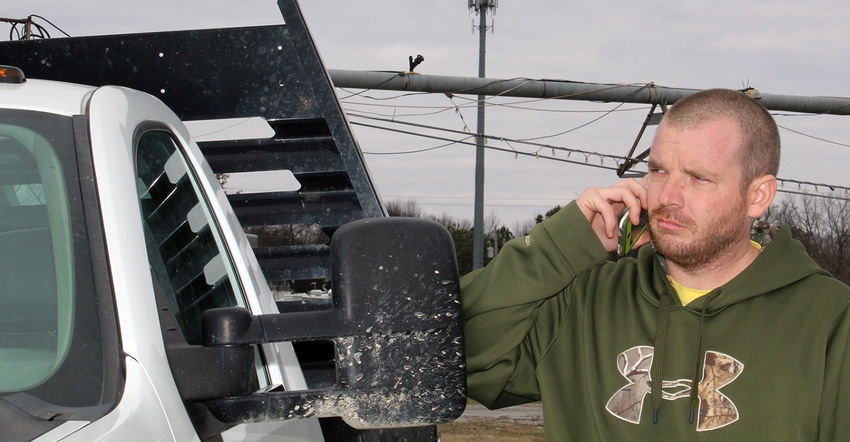
Darrington Seward and his father, Byron, farm around Louise, Miss. They were early adopters of cutting-edge farming technologies that have helped them increase efficiencies across their massive 24,000-acre multi-row crop operation.
The father and son team used RFID wireless technology to manage over 4,500 round modules this year from the time they were dropped in the field to the time the seed cotton was ginned. They both look forward to reviewing the fiber quality and yield-related data this new geo-referenced technology brings to them and will create maps based on that data to develop strategies that will improve their fiber quality and yields in 2018.
Because they understand the benefits of technology in general and rely on the internet to transfer important farming data created through the use of RFID module management technology, they are also painfully aware of the limitations placed on so many Americans living in rural areas where the lack of broadband service has created a digital divide.
Seward recently attended a roundtable discussion in Jackson, Miss., also attended by Mississippi Sen. Roger Wicker and representatives from Connect Americans Now (CAN). “CAN is a coalition of organizations and corporations that collectively work toward eliminating that digital divide,” says Seward. “The National Rural Education Association and Microsoft are just two of the many member organizations participating.”
Farming in the south Delta, Seward sees first-hand the lack of willingness many technology-centric organizations have toward investing in areas within that digital divide. While other areas of the country close to population centers reap benefits because of high-speed internet access, many rural Mississippians suffer from the lack of business opportunities which could be afforded to them through reliable broadband access.
Not only does agriculture suffer from this technology void, so do health care, education, and small businesses. “I was greatly encouraged but not surprised by how committed Sen. Wicker is working to connect more Mississippians to high-speed internet,” says Seward. “His understanding of how essential it is to our state’s economic future is recognized should be commended.”
The farmer and son family farming operation is always looking for and evaluating new advancements in technologies that will allow them to farm more efficiently and lower costs while simultaneously reducing their farming footprint on the environment.
Pieces of modern farm equipment like their five John Deere cotton harvesters that compress seed cotton into round modules have helped them accomplish parts of these aforementioned goals.
“That’s why I am excited at the work CAN is doing. Improving rural broadband access will allow all farmers to experiment with new technologies, find new customers and search for more affordable supplier partnerships,” says Seward.
The CAN coalition recognizes a viable solution and is partnering with telecommunications companies to implement the use “TV White Spaces” to reach 80 percent of rural Americans in desperate need of broadband. “TV white space refers to the unused television channels below 700 MHz between the channels in the VHF and UHF spectrum,” explains Seward. “These are usually referred to as ‘buffer’ channels that have been placed between active TV channels to prevent broadcasting interference.”
Seward and others in the coalition recognize the need for our leaders in Washington to influence the Federal Communication Commission (FCC) to protect the continued unlicensed use of at least three channels below 700 MHz in every market in the country. “We must have these channels open to the public so companies, through them, expand broadband coverage,” says Seward.
“The FCC is slowly but surely selling television channels to broadband companies and placing us back in lower UHF/VHF bands,” explains Mark Majilton, senior studio engineer, WMC-TV Channel 5 in Memphis, Tenn.
“To increase broadband coverage in your rural community, visit connectamerciansnow.com, join the coalition and ask your congressional members to urge the FCC to take action to allow the private sector to make this technology available to those of us in rural Mississippi and rural America,” concludes Seward.
About the Author(s)
You May Also Like




